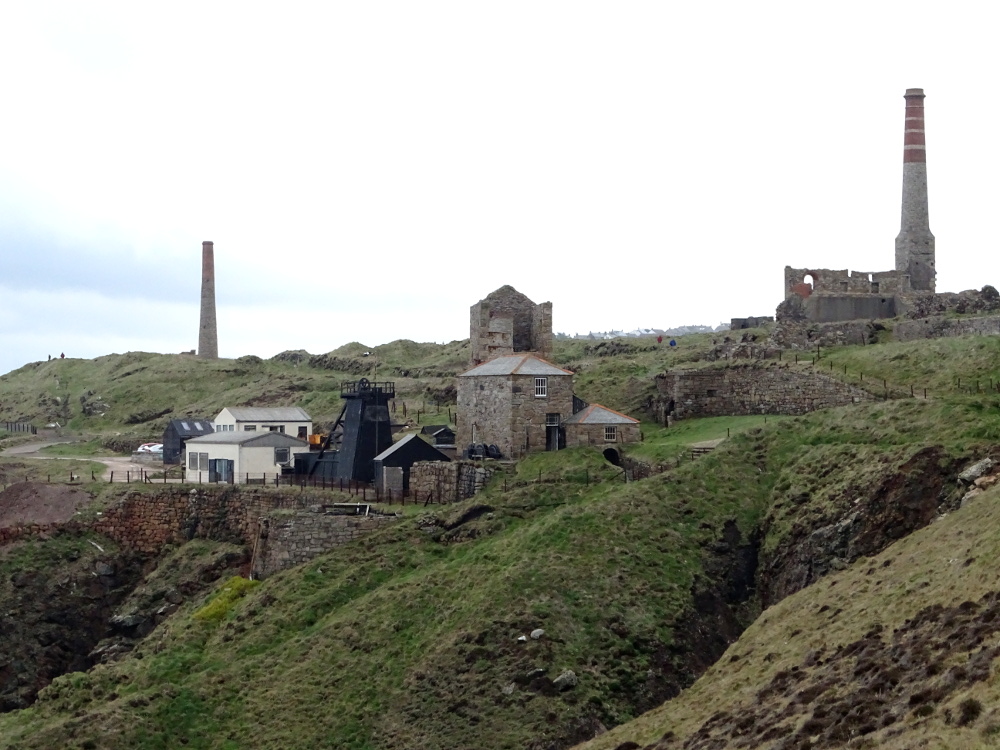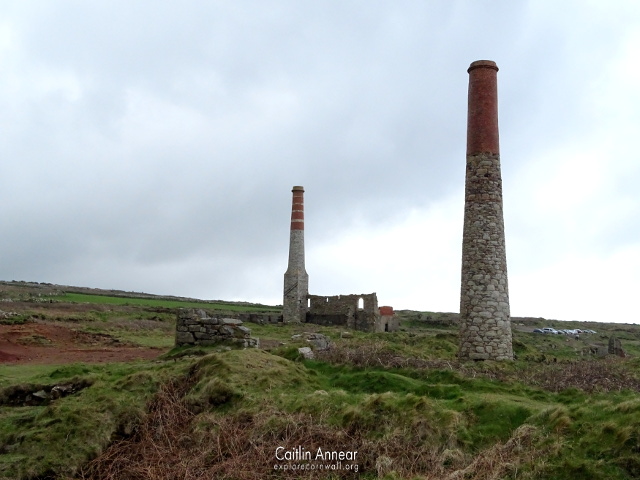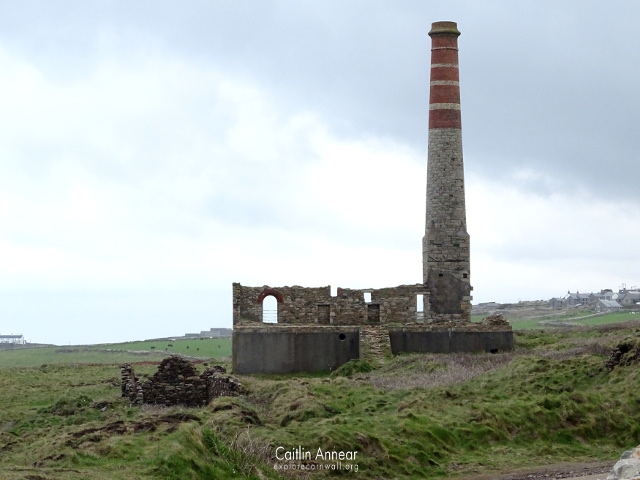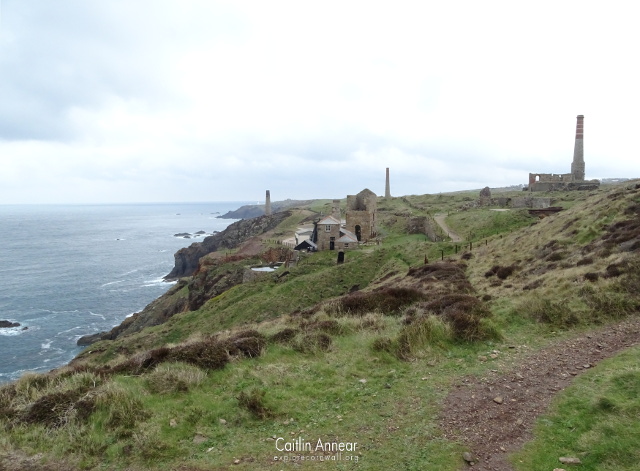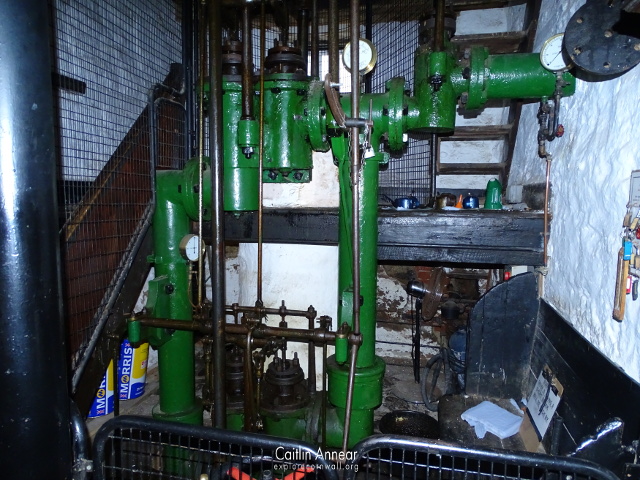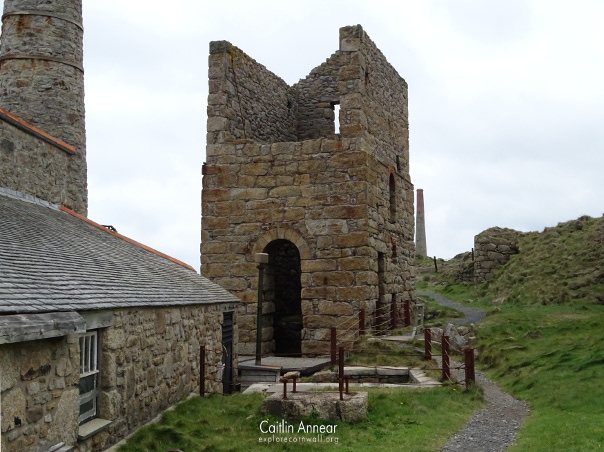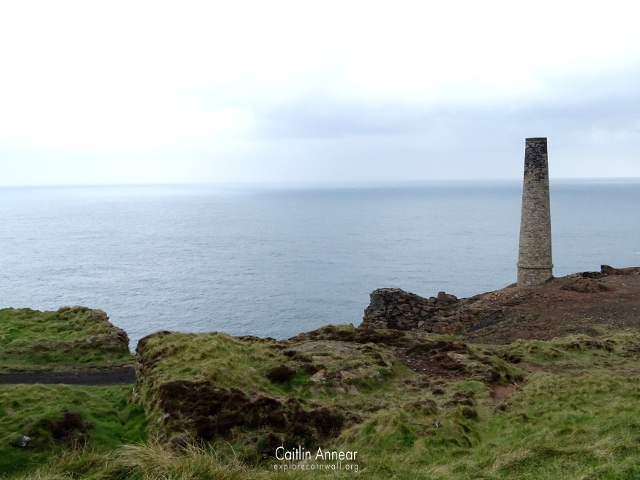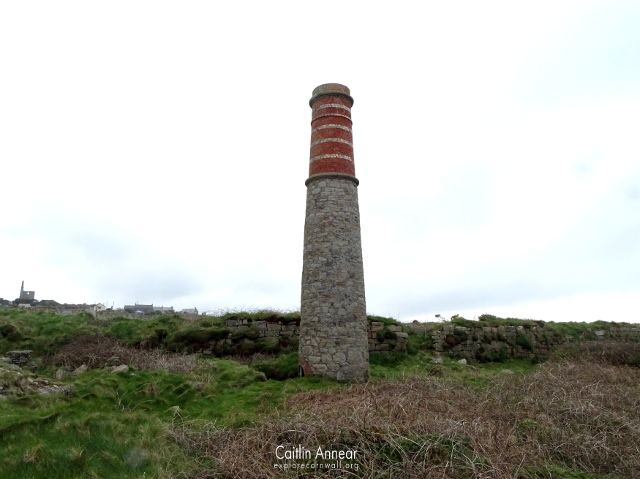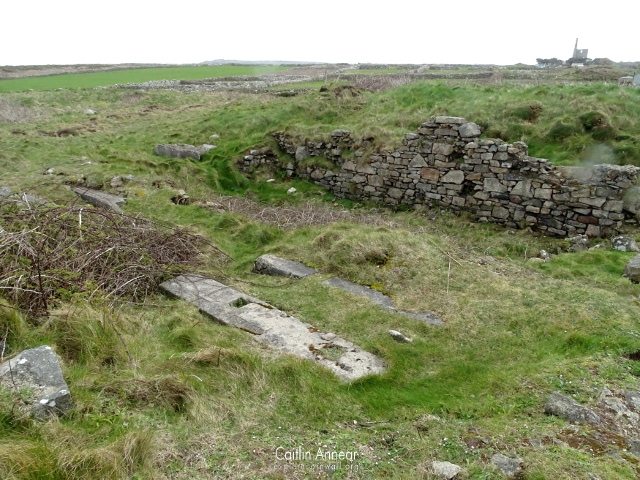Levant is an eclectic mix of a number of smaller copper and tin mines found on the north coast in Penwith. This remote mine workings is perched on the cliffs overlooking the Atlantic and a substantial number of its buildings still remain. Made up of an eclectic mix of smaller mines, this workings has a long and significant history in Cornish mining.
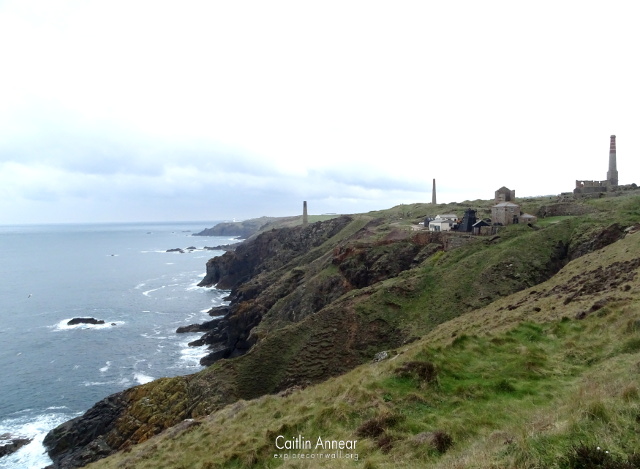
The exact early history of this mine, like so many others, is a mystery. The first records start in 1670 and consist of some stop and start copper mining, although the exact dates are unknown – these first mines include Wheal Shop, Wheal Unity, Wheal Fortune, Zawn Brinny and Boscregan.
By 1748, Levant had already begun to amalgamate a number of these smaller mines and had found several rich copper lodes, quickly building enough work to employ over 500 people on the site. Levant became a very profitable mine during this period, second only to Boswidden to the south; the mines dues accounting for a third of those in the parish.
The 1850’s saw tin production begin to overtake copper. At this point the mine had reached a depth of 240-fathoms (440m) and had over 60 miles of tunnels driven out under the sea.
During the 1860’s and 70’s, Levant suffered from financial difficulties, particularly during the copper financial crash caused by large Welsh mines. The mine soldiered on through, making essential developments and was back making profits towards the end of the century. Based on these records starting from 1848, Levant was one of the top ten most profitable mines in Cornwall. This wealth also allowed the mine to continue on through the second half of the 19th century, despite the worldwide slump in tin prices. In 1880, Levant acquired its neighbour Spearn Consols, with Higher Bal engine house, which will be covered in a separate post. In 1895 a telephone was installed, one of the first used in a mine, allowing for quick communication.
On the 20th of October 1919, the man engine which was installed in 1893 failed. Man engines were first introduced in 1842, the same year one was installed at Tresavean mine in Lanner; these were used to aid the transport of men down into the mine instead of ladders. A steam engine is used to raise and lower platforms, allowing miners to step from sidings in the shaft wall onto platforms as they go up and down. By 1919, Levant was one the last mine in Cornwall to still be using a man engine, although plans were in place to install a gig into a new shaft.
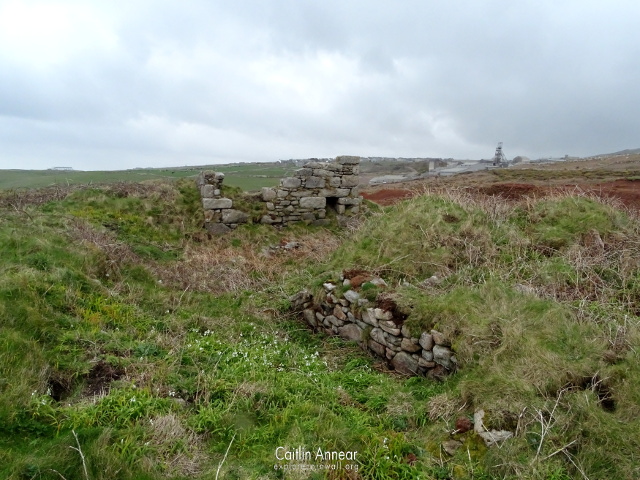
Remains of the stamps engine house. This would have housed a 32″ engine that drove 76 heads of stamps.
On the day of the incident, at approximately 2:30pm, the link connecting the engine beam and rod broke. This caused the rod to drop into the shaft, taking out the platforms and damaging the shaft. As this occurred towards the end of a shift, the man engine was full of workers returning to the surface, many who fell down the shaft or were crushed or injured. 31 people were killed. Following the incident, the engine was not repaired and the deeper parts of the mine abandoned.
Levant mine closed in 1930, having never really recovered from the accident. During the 1960’s and 70’s, Geevor attempted to rework some sections of the mine, but had to make significant repairs to some of the tunnels under the sea to stop the influx of water flooding the tunnels. This last venture didn’t come to much and the Levant site was handed over to the National Trust.
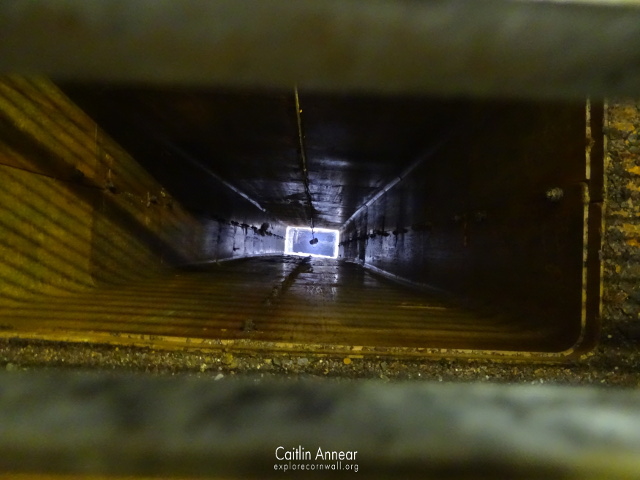
The view down Skip shaft
Skip (290 fathoms/530m), Goldsworthy’s, Engine (290 fathoms/530m), Batten’s (230 fathoms/420m), Zawn Brinny, Old Bal, Angwin’s (90 fathoms/165m), Phillip’s (230-fathoms/420m), Man Engine/Daubuz (266 fathoms/486m), Tresize (12 fathom/22m), Unity, Boscregan (45 fathoms/82m), Old Submarine (210 fathom to 302 fathom levels/384-552m) and New Submarine (260 fathom to 350 fathom levels/475-640m).
Prince of Wales, North, Old Bal/Trebilcocks, Shop, Boscregan, Guide, South and Tregown’s.
Being the successful mine that it was, Levant had a large number of buildings and engine houses on its site, many of which still stand today. The central point of the mine is made of the buildings around Skip shaft including the 45″ pumping engine and the old 27″ whim with its electric replacement.
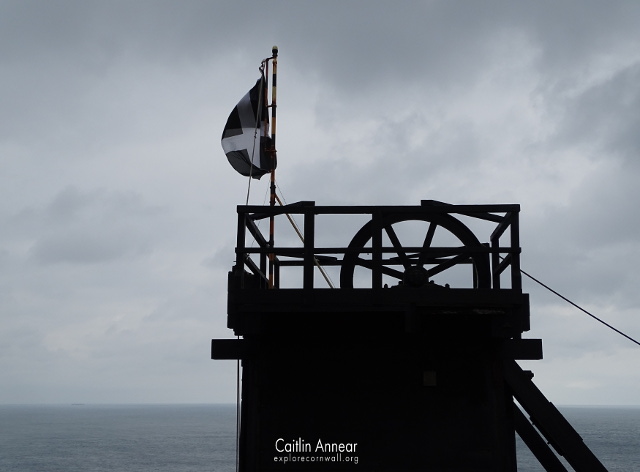
The wooden headgear placed over Skip shaft by Geevor during their reworking. The whole shaft was enclosed to try and prevent the salty sea air from corroding the machinery.
Engine Houses and Other Significant Buildings
>1835 – 26″ pumping engine on Engine shaft
1835 – 40″ pumping engine on Engine shaft
1836 – 32″ stamps engine
>1840 – 24″ whim engine on Skip shaft
1840 – 27″ whim engine on Skip shaft
1852 – whim engine possibly on Zawn Brinny shaft
1857 – 20″ man and whim engine
<1870 – 20″ crusher
1870’s – water powered stamps
1872 – 40″ pumping upgraded to 45″
1893 – man engine changed to 18″ and 30″ horizontal tandem
1897 – steam whim in a cavern on the 210 fathom level of old submarine shaft
1901 – Harvey’s 60′ engine for air compressor house
1906 – stamps made double acting
1919 – concrete bases for twin cylinder horizontal whim from Basset Mine that was never erected
1920 – engine in air compressor house replaced with electric engine and electric air compressors
1922 – New Mill for dressing ore
1929 – electric hoist
26″ indoor beam engine possibly on Batten’s shaft
26″ pumping or whim engine
?21″ pumping engine possibly on Batten’s
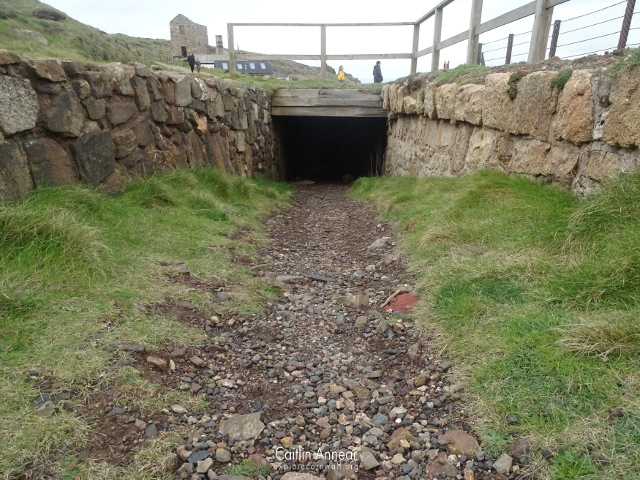
Levant was a very rich copper and tin mine and it’s first recorded production records dates from 1793 and included 10 tons (10,160.5kg) of copper. Between 1820 and 1930 the mine extracted over 24,000 tons (24,385,126kg) of black tin, 130,000 tons (132,086,098kg) of copper and 4,000 tons (4,064,188kg) of arsenic. In 1912 there was also a recorded 5,273 oz (115,217.8kg) of silver and 4 oz (0.1kg) of gold.
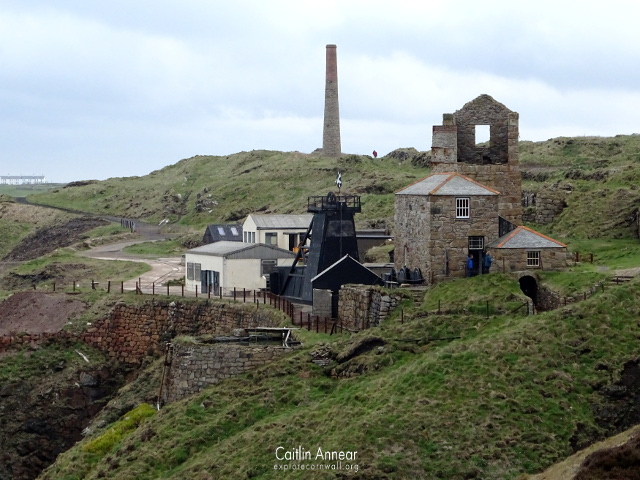
Levant also mined a large number of other minerals in smaller quantities, although most of these were recorded in the Wheal Unity and Spearn Consols area: copper silicate, arsenates, zinc, lead, antimony, molybdenum, cobalt, tungsten, iron, quartz, fluorospar, aragonite (calcium carbonate), garnet, tourmaline and gypsum among others.
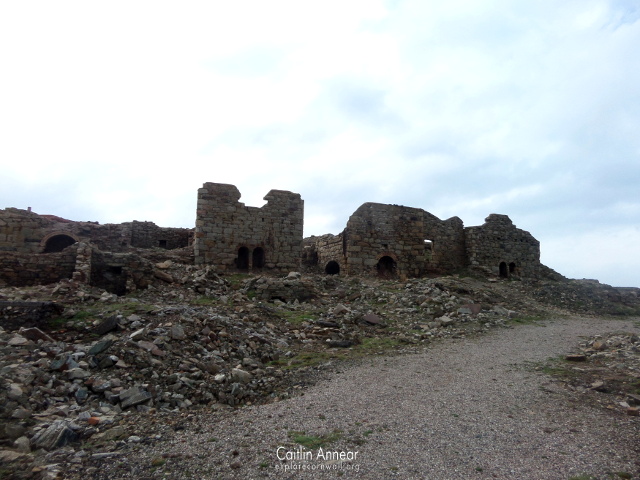
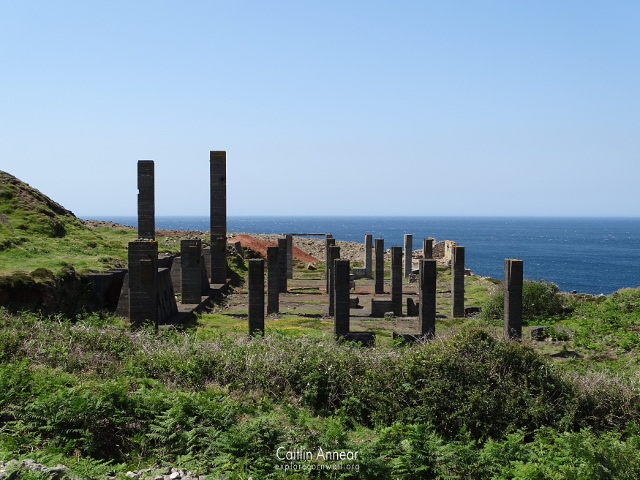
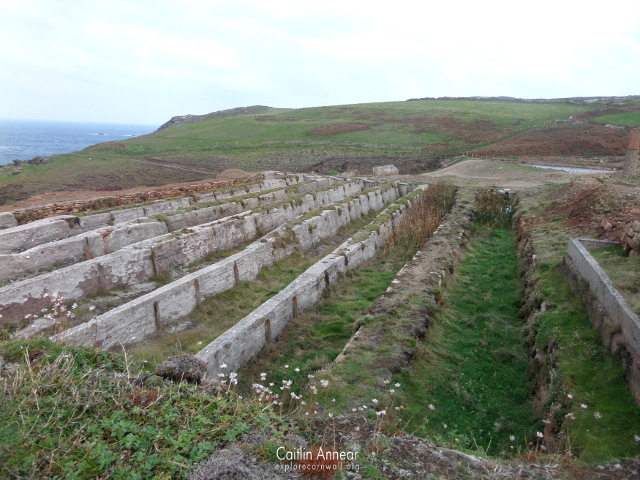

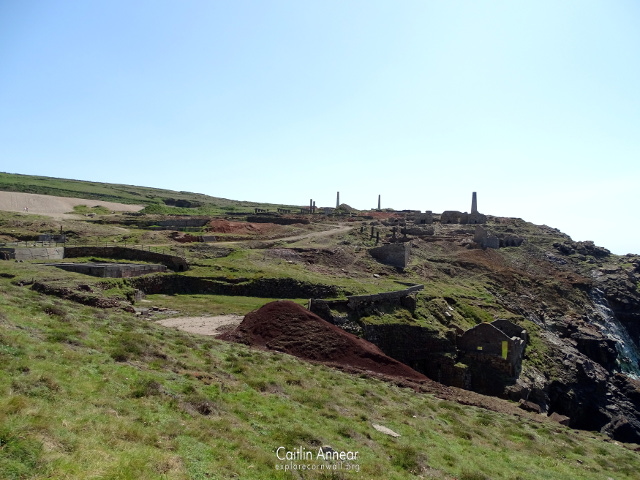
Photos from the Levant dressing floor. Photo 1: remains of the arsenic calciners; 2: 1920’s tin mill; 3: settling tanks and slime pits; 4: waterwheel powered stamps; 5: view of the dressing floor.
Levant had a significant dressing floor, built up over its many years of work. The older sections would have once stood closer to to Skip shaft, but the most prominent remains are that of the 1922 New Mill built further down the slope closer to Geevor. At various stages of its life it would have had four brunton calciners, nine buddles, 24 frue vanners, settling tanks, slime ponds, thickening pits, a labyrinth, a flue, copper precipitation plant and leaching tanks. The mine also used several different types of stamps: California, Frazer’s and Chalmers and Nissen.

The concrete foundation for a new horizontal whim that was never installed in a shaft that wasn’t dug.
The majority of the mine is free to access and explore along the coastpath. Most of the buildings have now been consolidated to some extent and shafts capped. The central area around Skip shaft can be viewed from the coastpath as well, but its care is now under the National Trust, so if you want a closer look inside the buildings or to see the restored engine in action you’ll have to pay or be a NT membership.
The aforementioned restored engine is the original from 1840 which was saved from scrapping in 1935 by the Cornish Engines Preservation Society (Trevithick Society) who gave it to the National Trust in 1967. From 1984, a group of like minded individuals, called the Greasy Gang got to work restoring it back to its former glory and in 1993 it was back in business. It’s fired up most days throughout the season for visitors to see.
There are toilets on the site and the main desk sells a small selection of snacks and drinks.
Levant has its own carpark down a long bumpy lane. It is owned by the National Trust, making it free to members and pay and display for everyone else.
Brown, K. and Acton, B. (1997) Exploring Cornish Mines: Volume Three. Truro: Landfall Publications.
Geevor and Levant (1993). Available at: http://map.cornwall.gov.uk/reports_event_record/1993/1993R043.pdf (Accessed: 30 August 2019).
Goodbody, A. (2013) ‘The Disaster at Levant’, Mining Magazine. Available at: https://www.miningmagazine.com/mining-the-past/news/1263903/disaster-levant.
Jones, S. (no date) Levant Mine, Cornish Mine Images. Available at: http://www.cornishmineimages.co.uk/levant-mine/ (Accessed: 10 October 2019).
Nance, D. and Brown, K. (2014) A complete guide to the engine houses of West Cornwall. Gloucestershire: Lightmoor Press.
Sharpe, A. (1993a) Geevor and Levant: An assessment of their surface archaeology for Cornwall County Council. Available at: http://map.cornwall.gov.uk/reports_event_record/1993/1993R045.pdf (Accessed: 30 August 2019).
Sharpe, A. (1993b) St Just: An archaeological survey of the mining district volume II. Available at: http://map.cornwall.gov.uk/reports_event_record/1992/1992R032.pdf (Accessed: 30 August 2019).
Sharpe, A. (2008) Geevor and Levant, Cornwall Historical landscape development. Available at: http://map.cornwall.gov.uk/reports_event_record/2008/2008R059.pdf (Accessed: 30 August 2019).
Sharpe, A., Edwards, T. and Sparrow, C. (1992) St Just: An Archaeological Survey of the Mining District. Available at: http://map.cornwall.gov.uk/reports_event_record/1992/1992R031.pdf (Accessed: 30 August 2019).
